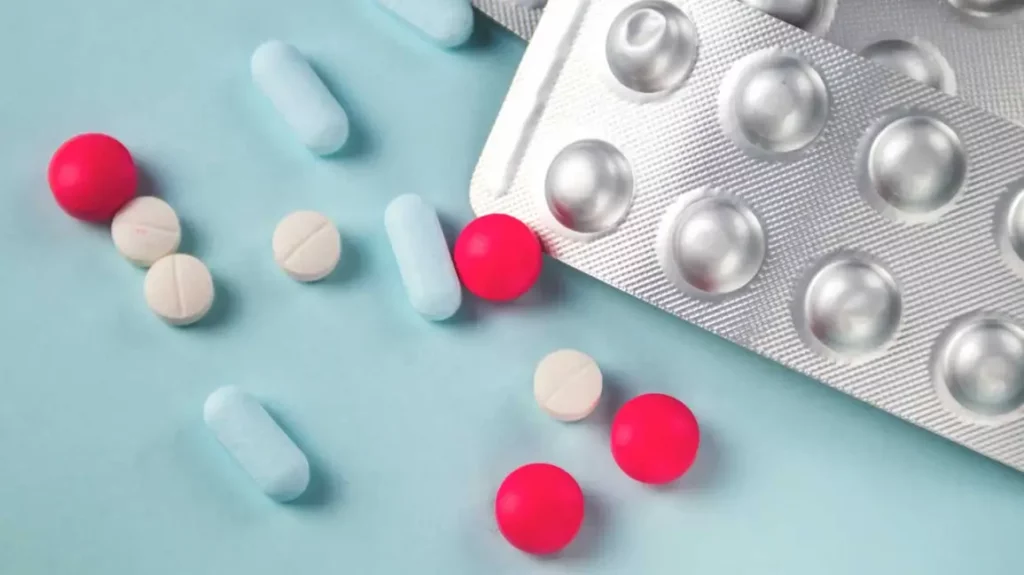One class of medications that plays a crucial role in managing blood sugar levels is Thiazolidinediones (TZDs). These medications, also known as glitazones, have been a significant addition to the arsenal of drugs available for diabetes management. In this comprehensive guide, we will explore the ins and outs of TZD medications, shedding light on their mechanism of action, benefits, potential side effects, and how they fit into the broader spectrum of diabetes care.
Contents
What Are The Names Of TZD Medications?
 The two main Thiazolidinediones (TZDs) medications that have been approved for the treatment of Type 2 diabetes are:
The two main Thiazolidinediones (TZDs) medications that have been approved for the treatment of Type 2 diabetes are:
- Pioglitazone (Actos): Pioglitazone is an oral medication that belongs to the TZD class. It works by improving insulin sensitivity in the body’s cells, thereby helping to lower blood sugar levels.
- Rosiglitazone (Avandia): Rosiglitazone is another TZD medication used to treat Type 2 diabetes. Like pioglitazone, it works by improving insulin sensitivity, helping the body use insulin more effectively to control blood sugar levels.
It’s important to note that while these medications can be effective in managing diabetes, they are not suitable for everyone, and their use should be discussed with a healthcare professional. Additionally, guidelines and availability of medications may vary by region and country. Always consult with a healthcare provider for personalized advice and treatment options based on individual health needs.
How TZD Medications Are Helpful In Diabetes?
Thiazolidinediones (TZDs) are a class of medications that can help manage Type 2 diabetes through their unique mechanism of action. Here are some ways in which TZD medications contribute to diabetes management:
Improvement of Insulin Sensitivity
TZDs primarily work by enhancing insulin sensitivity in the body’s cells. Insulin is a hormone that helps cells take up glucose from the bloodstream. In individuals with Type 2 diabetes, there is often insulin resistance, meaning the body’s cells do not respond well to insulin. TZDs address this issue by improving the cells’ ability to respond to insulin, facilitating better glucose uptake.
Reduction of Glucose Production in the Liver
In addition to improving insulin sensitivity, TZDs also reduce the liver’s production of glucose. In diabetes, the liver can produce excess glucose, contributing to elevated blood sugar levels. TZDs help regulate this process, further assisting in the control of blood glucose.
Long-term Glycemic Control
By addressing insulin resistance and reducing excessive glucose production, TZDs contribute to long-term glycemic control. Maintaining stable blood sugar levels over time is crucial in preventing complications associated with diabetes, such as cardiovascular issues, kidney problems, and nerve damage.
Potential Cardiovascular Benefits
Some studies suggest that TZDs may have cardiovascular benefits beyond glycemic control. They may have a positive impact on factors such as blood pressure and lipid profiles. However, it’s important to note that individual responses to medications can vary. And not all individuals may experience these additional cardiovascular benefits.
Combination Therapy
TZDs are often used in combination with other classes of diabetes medications to achieve optimal blood sugar control. Combining medications with different mechanisms of action can provide a more comprehensive approach to diabetes management.
It’s important to highlight that while TZDs offer benefits in diabetes management, they are not without potential side effects, and their use should be carefully considered in consultation with a healthcare professional. Additionally, individual responses to medications can vary, and not everyone may be a suitable candidate for TZD therapy. Regular monitoring and follow-up with a healthcare provider are essential to ensure safe and effective diabetes management.
Is Glimepiride A TZD Drug?
 No, glimepiride is not a Thiazolidinedione (TZD) drug. Glimepiride belongs to a different class of medications known as sulfonylureas. Sulfonylureas work by stimulating the beta cells in the pancreas to release more insulin. Insulin is a hormone that helps lower blood sugar by facilitating the uptake of glucose into cells.
No, glimepiride is not a Thiazolidinedione (TZD) drug. Glimepiride belongs to a different class of medications known as sulfonylureas. Sulfonylureas work by stimulating the beta cells in the pancreas to release more insulin. Insulin is a hormone that helps lower blood sugar by facilitating the uptake of glucose into cells.
On the other hand, TZDs, or Thiazolidinediones, include medications such as pioglitazone and rosiglitazone. TZDs work by improving insulin sensitivity in the body’s cells, especially in muscle and fat tissues, and by reducing glucose production in the liver.
Individuals with diabetes need to be aware of the specific class of medications they are taking, as different classes have different mechanisms of action and potential side effects. Always follow the prescribed treatment plan provided by your healthcare provider and consult with them if you have any questions or concerns about your medications.
What Are Some Common Side Effects Of TZD Medications?
Thiazolidinediones (TZDs) can be effective in managing Type 2 diabetes. But like any medication, they may be associated with certain side effects. It’s important to note that not everyone will experience these side effects, and their severity can vary from person to person. Common side effects of TZD medications, such as pioglitazone and rosiglitazone, may include:
- Fluid Retention and Edema
Some individuals may experience fluid retention, leading to swelling in the ankles, legs, or other parts of the body. This can be a result of TZDs affecting fluid balance.
- Weight Gain
Weight gain may occur in some individuals using TZDs. This is partly due to fluid retention and an increase in fat tissue. It’s important to monitor weight regularly and discuss any concerns with a healthcare provider.
- Increased Risk of Fractures
There is evidence suggesting a potential increased risk of fractures, particularly in women, associated with long-term use of TZDs. This risk should be considered. Especially in individuals with existing bone health concerns.
- Risk of Heart Failure
There is a known association between TZDs and an increased risk of heart failure, particularly in individuals with a history of heart disease. It’s essential to discuss cardiovascular health with a healthcare provider before starting TZD therapy.
- Liver Function Abnormalities
TZDs can affect liver function, and regular monitoring of liver enzymes is typically recommended during treatment. Any signs of liver problems, such as jaundice or abdominal pain, should be promptly reported to a healthcare professional.
- Increased Risk of Bladder Cancer (Pioglitazone)
Some studies have suggested a potential association between long-term use of pioglitazone and an increased risk of bladder cancer. This risk should be weighed against the potential benefits of the medication, and individuals with a history of bladder cancer may need alternative treatments.
It’s crucial for individuals prescribed TZDs to communicate openly with their healthcare providers about any side effects or concerns. The decision to use TZDs should be made based on a thorough assessment of an individual’s overall health, considering potential risks and benefits.
What Are Some Complementary Approaches To TZD Medications?
 Complementary approaches to TZD medications involve lifestyle modifications and additional treatments that can work synergistically to enhance the overall management of Type 2 diabetes. Here are some complementary approaches:
Complementary approaches to TZD medications involve lifestyle modifications and additional treatments that can work synergistically to enhance the overall management of Type 2 diabetes. Here are some complementary approaches:
Healthy Diet and Regular Exercise
Adopting a balanced and nutritious diet, rich in fruits, vegetables, whole grains, and lean proteins, can contribute to better blood sugar control. Regular physical activity is also crucial, as it improves insulin sensitivity and helps maintain a healthy weight.
Other Diabetes Medications
TZDs are often used in combination with other classes of diabetes medications, such as metformin, sulfonylureas, or dipeptidyl peptidase-4 (DPP-4) inhibitors. Combining medications with different mechanisms of action can provide comprehensive glycemic control.
Insulin Therapy
In some cases, TZDs may be used in combination with insulin therapy to achieve better blood sugar control. This can be particularly helpful for individuals with advanced or poorly controlled diabetes.
Regular Monitoring of Blood Sugar
Consistent monitoring of blood glucose levels helps individuals and healthcare providers track the effectiveness of treatment. It also allows for prompt adjustments to the treatment plan if needed.
Weight Management
Maintaining a healthy weight is important for overall diabetes management. Weight loss, if necessary, can improve insulin sensitivity and reduce the risk of cardiovascular complications.
Cardiovascular Health Measures
Given the potential cardiovascular effects associated with TZDs, it’s crucial to manage other cardiovascular risk factors. This includes managing blood pressure, and cholesterol levels, and adopting heart-healthy lifestyle practices.
Education and Support
Diabetes self-management education and support programs can provide valuable information and resources for individuals with diabetes. Learning about the condition, medication management, and lifestyle modifications can empower individuals to take an active role in their health.
Natural Supplements and Alternative Therapies
Some individuals explore natural supplements like cinnamon, chromium, or alpha-lipoic acid as complementary approaches. However, it’s important to discuss these with a healthcare provider, as their effectiveness and safety can vary.
Stress Management
Chronic stress can affect blood sugar levels. Techniques such as mindfulness, meditation, yoga, and relaxation exercises may help manage stress and improve overall well-being.
Individuals should work closely with their healthcare team to develop a comprehensive and personalized diabetes management plan that includes both medication and lifestyle strategies. Open communication and regular follow-ups are essential for successful diabetes care.
Conclusion
In conclusion, TZD medications play a vital role in managing Type 2 diabetes by improving insulin sensitivity and aiding in long-term blood sugar control. While they offer significant benefits, individuals must be aware of potential side effects. Such as fluid retention and an increased risk of heart-related issues. Complementary approaches, including a healthy diet, regular exercise, and close monitoring of blood sugar levels, can enhance the effectiveness of TZD treatment.
Ultimately, the decision to include TZDs in a treatment plan should be based on a careful consideration of individual health needs, potential risks, and the overall goal of achieving optimal glycemic control. Do you want to get rid of diabetes? Join our online diabetes treatment program and reverse Diabetes naturally through lifestyle changes such as a Personalized Diet plan, Exercise, Yoga, dieticians, and health coaches.

